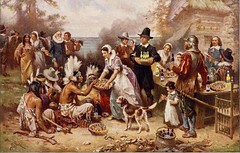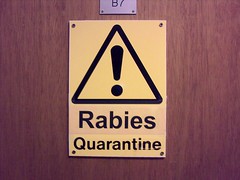
Image via Wikipedia
When Danish and Czech scientists exhumed the remains of the astronomer Tycho Brahe in Prague this month, they dug up much more than some bones and hairs. They found something that has eluded astronomers for thousands of years: a story with major box-office potential.It's "Amadeus" meets "Da Vinci Code" meets "Hamlet," featuring a deadly struggle for the secret of the universe between Tycho, the swashbuckling Danish nobleman with a gold-and-silver prosthetic nose, and the not-yet-famous Johannes Kepler, his frail, jealous German assistant. The story also includes an international hit man, hired after a Danish prince becomes king and suspects Brahe of sleeping with his mother (and maybe being his father!).
For comic relief, there's a beer-drinking pet elk wandering around Tycho's castle, as well as a jester named Jepp, a dwarf who sits under Tycho's table and is believed to be clairvoyant.
That's definitely a film I would see. You can read more here.










Recent Comments
Alec Defosses :
:
Good read. I saved the page for future visit. read moreShakira Furci :
:
Incredibly interesting piece of content. I was in search of read moreRitts :
:
Your site is amazing. I wonder just how do you read moreMeda Kiner :
:
I found your blog in the "Trackback" section of another read moreGale Mady :
:
The integration of bears into a godly American holiday read moreB. Samuel :
:
This information on how earth worms behave is very fascinating. read more